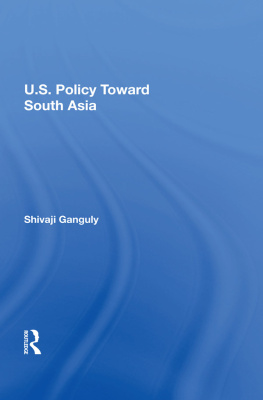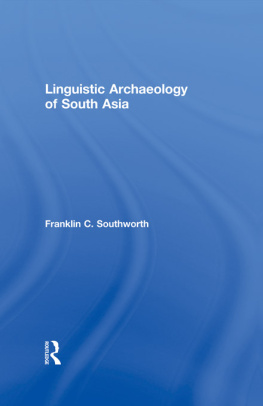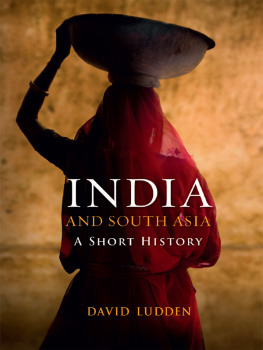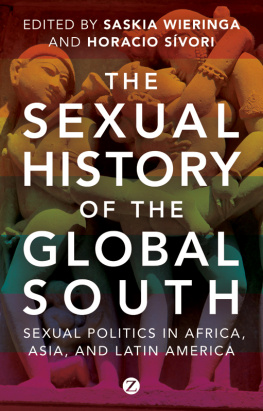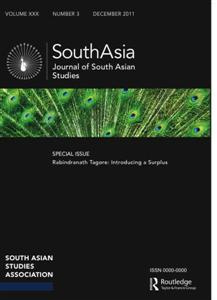To the late Biren Das Sharma.
He got me into Bengali films, and I had promised him this volume.
He is very much missed.
Contents
For this study, I read new and varied work by scholars and friends such as Abhijit Roy, Moinak Biswas, Anjali Gera Roy, Raminder Kaur, Virinder Kalra, Rajinder Dudrah, Amit Rai, Sanjay Sharma, Ravi Vasudevan, Ravi Sundaram, Amitava Kumar, Biju Mathew, Vijay Prashad, Rosie Thomas and many others. In particular, I focused upon and learnt much from the noted works of four scholars: M. Madhava Prasad, Ashish Rajadhyaksha, Tejaswini Niranjana and Arvind Rajagopal. While they are not responsible for what I write, their collective work made the old media studies look obsolete. It was their fresh look at film, television, and screen cultures in general and the political contextualization offered by these scholars in particular that hit me as an imperative. In the afterglow of their different contributions though glossing their ideas cannot make them agree by any means extending beyond the conventions of screen studies to encompass musicology, sociology, political economy and cultural studies made it possible to conclude that the cinematelevision conjunction today is a fully articulated geopolitical medium. The faults and limitations of this assessment are of course mine. Nevertheless, Abhijit Roy has nurtured this book, much more than he knows. Also Klaus-Peter Koepping, Chandrika Parmar, Gayatri Chakravorty Spivak, Joel McKim, Aparajita De, Bhaskar Mukhopadhyay, Scott McQuire, Shiv Vishvanathan, Amitava Ganguly, Amites Mukhopadhyay, Ursula Rao, Meeta Jha, Royona Mitra, Prarthana Purkayastha, Peter Phipps, Ulki Goswami, Claire Reddleman, Lara Choksey, Allen Chun, Joanna Figiel, Theresa Mikuriya, Devina Gupta and Camille Barbagallo all made important contributions, as did the incredibly generous Dorothea Schaefter. Babu at Foreign Publishers Agency kept me supplied, as did Seagull. Paramita Brahmachari did the art with care and inspiration. Liza Thompson, Susan Krogulski, Erin Duffy and Katie Gallof at Bloomsbury had faith. The copyediting and layout is by Rohini Krishnan and Shyam Sunder. Finally, although this book is not wholly her fault, Sophie Fuggle is a great writing partner, critic and mother of even greater children, and the light of my life: her involvement is second only to that of the kids, who I go on about too much and who send me to do your work only after bedtime stories about elephants and songs about billabongs.
This is not a book on films, but on the social analyses that films, television and other media bring to what I will call Global South Asia. It is a study of the politics of interpretation that manifests, for good and bad, in a co-constituted, multifarious, materially here and there way as Global South Asia on screen. For the past thirty years at least, a wide-ranging and often under-referenced body of work has challenged disciplinary and categorical confines and exposed prejudice and exoticism in media studies. A new Global South Asian film and television scholarship has emerged and diverged from its antecedents and influences. Through this work it has become clear that a theory of the media cannot rely only upon media studies in a narrow sense, by which is meant any technological determinist focus on film grading, lens aperture, dolly and trolley equipment, digital management systems, frequency regulation, censor boards, distribution companies, actor bios, set design, cinema hall architecture, trade papers, fanzines or screening schedules. It does mean that questions on such themes could be relevant, insofar as they reveal a social process. Auteur anecdotes and show business gossip could be included, if they illustrate the ways in which knowledge, culture and social reproduction operate. But the first premise of this book is that study of media made in and about the subcontinent and its diasporas has a secret politics (Nandy 1998). In the versions considered here, this secret is really about the screen at the saturation point of the social as an avatar of politics with media characteristics, universally applied.
Global South Asia is pressed into duty as narrative, image and plot, framed on screens in cinemas, televisions and on a globally proliferating series of connected devices to tell more or less fantastic stories to and about more or, well, many more than one-sixth of the worlds population. Without a critical vigilance, the phantasmagorical flurry that terrorizes the social and informational world blurs by as pixilation, while the propagation of media and the screen image itself takes over minds and communities in relentlessly extended ubiquity. Regional cultural contours of course remain, but the tendency for example, in news entertainment not only on NDTV 24x7, Zee TV, but also on Asianet, STAR, Al Jazeera, Press TV is now wholly tuned towards the service of an all-conquering extended ideological formation that can access all areas, or so it claims. No one should be surprised that television becomes battle media and war looks like the movies our cinematic vision guides us as we watch 1000-yard-stare reporters feeding on other media feeds, and we snap selfies in the wings. Long ago, people got used to actors as presidents or god-politicians; so now the staged press opportunity is no more unusual than Jai from Sholay (1975, dir. Sippy) fronting a game show.
A maverick orientation would not disqualify also recognizing that Global South Asia refers to industrial level cultural industry production, with deep-pocketed taxation and tribute to the finances of the North. This comes with ideological management through scholarly work in the elite institutions, and a parasitic relation to creativity, initiative and peoples movements that challenge the arrangements and agreements of culture and hierarchy as such. So many things to be taken together: the films of South Asia; the films of South India; television from Britain; documentary in Bangladesh, viewers from Guyana; dialogue and dubbing from studios with high aspirations in Lagos, Porto Alegre and Kuala Lumpur; the popularity of Shah Rukh Khan in Lahore, Karachi or Tasmania; public sphere conferences with regional, national or transnational reach; fandom and fanaticism from far-flung corners mediated by dance, or theatre, where there are drones and amateur dramatics, and more, in excess of any possible survey. Might the proliferation of examples testify to the never-ending reach of a media studies careening towards crisis ever since Krishna hitched his chariot to the Doordarshan platform and Murdoch entered the star-filled firmament to parade as colossus astride a rampant deregulation? It remains to be seen whether the mediatized forms of screening multiple South Asias, whether televisual or convergence electronics, can survive the crosscutting segmented categories when held up for public debate.
The terminology is of course important, but from the title on, to never be convinced or satisfied with the given terms is a marker of a certain tentative sophistication: here it is also hoped that the chosen title for the book, Global South Asia on Screen, is worth critical appraisal not to secure the choice, but to keep it destabilized and open. Sure, the Global South is not only South, and some parts of the North are there it is clearly not a geographical category. South Asia is also no easy homogeneity, and there is much to say throughout on this mostly inspired by the persistent critical thinking provided by Gayatri Chakravorty Spivak (over many books: 1993, 1999, 2003, 2008, 2012). Using the much-debated publishers favourite labels such as post-colonial, or its non-synonyms in the non-West, or the periphery, or developing nations has a host of flaws as well, and if there are conceptual nuances that need to be taken into account, those who use such terminology come quickly to see the limitations and the need for a work around. My work around is to insist that it is a good thing that the terms require introspection, though if that is all they provide, that too is inadequate. The introspection must also be there for the last two words of the title. These are not afterthoughts or a subtitle; they name very well the focus of the book which is to do with filmed media in any of its formats





